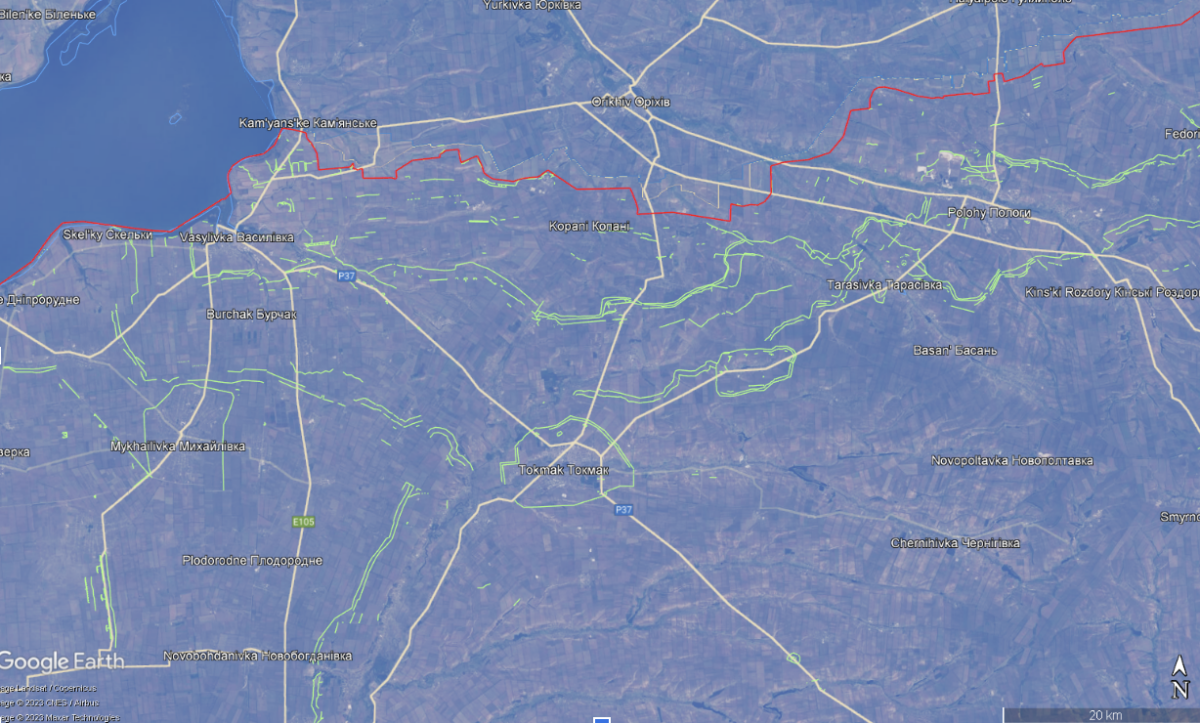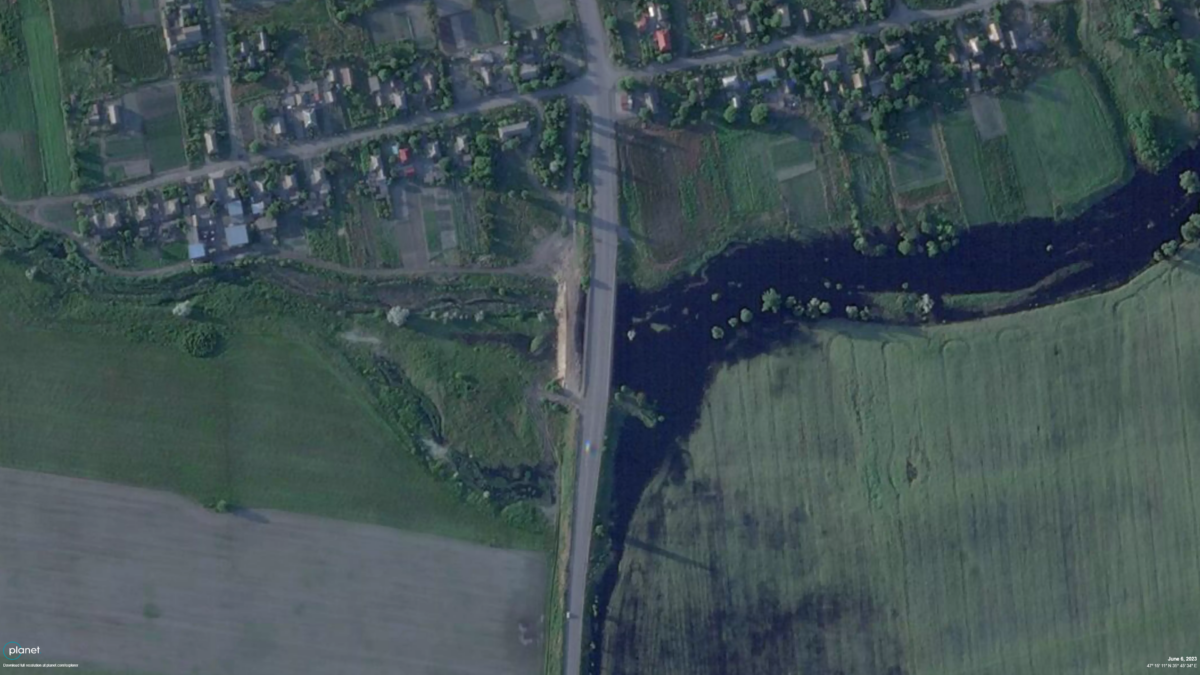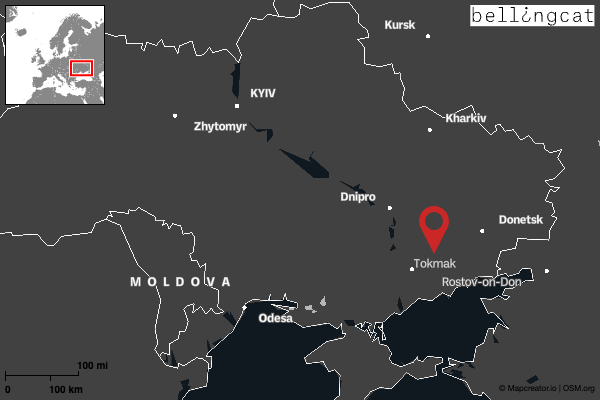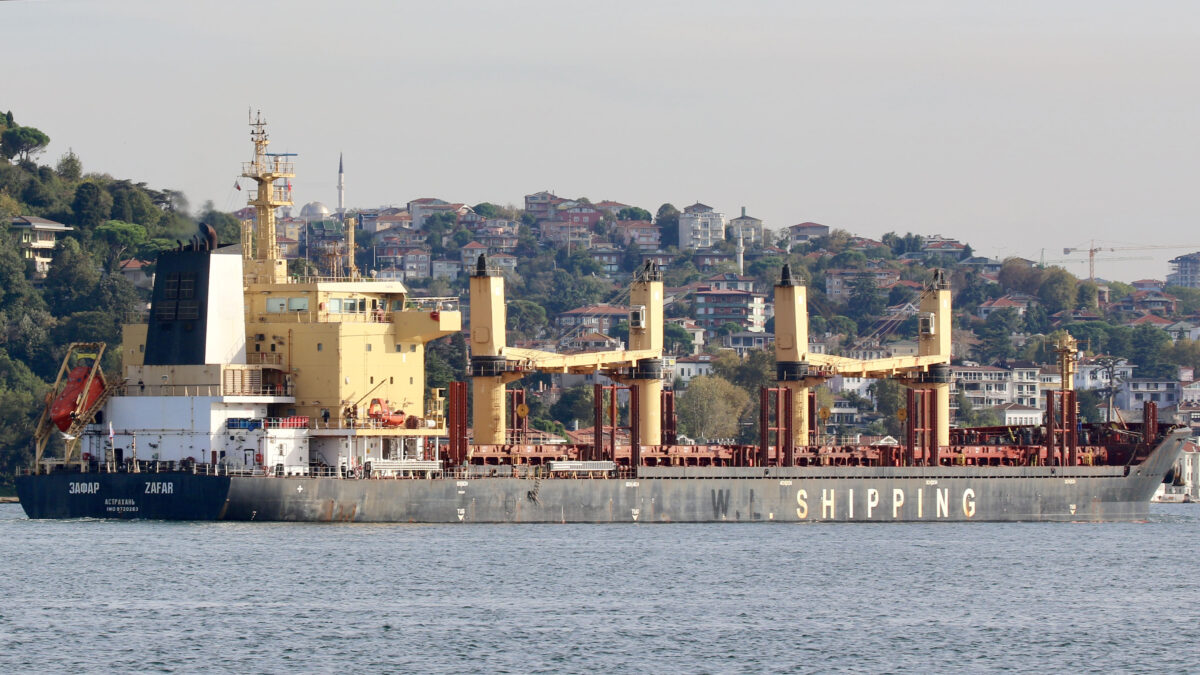Satellite Imagery Reveals Russia Caused Flooding in Occupied Ukrainian Town Before Counteroffensive
Satellite imagery obtained by Bellingcat suggests that Russia created a dam on the outskirts of the occupied Ukrainian city of Tokmak in Zaporizhzhia oblast ahead of Ukraine’s counteroffensive. This was previously reported by the Center for Journalistic Investigations, which noted that the move was part of a greater trend of creating water obstacles for the Ukrainian counteroffensive. However, Planet satellite imagery seen by Bellingcat now offers a more detailed view of the scene. The Kharkiv Human Rights Protection group also noted a trend of deliberate flooding across Zaporizhzhia oblast by Russian forces.
Water has been used as a tool on several occasions since the onset of Russia’s full-scale invasion.
In these instances, dams were broken to flood downstream areas, likely in order to complicate offensive efforts of the enemy. This would lead to higher water levels and muddy ground downstream along with the longer-term outcome of dried up reservoirs.
Both sides have used these tactics so far, with Ukraine admitting to doing so in Demydiv just north of Kyiv at the start of the war. Ukraine is also reported to have blown up the floodgates of the Oskil reservoir dam in April 2022 to complicate Russian efforts. However, Russian forces are suspected of fully destroying the Oskil dam as a Ukrainian counteroffensive advanced later that year.
It now appears that Russia may be considering flooding tactics in Tokmak.

The makeshift dam lies within the defensive line wrapping around the city of Tokmak, which itself is behind several more defensive lines as can be seen in the map above.
Since the dam’s construction in early May, the Tokmachka river has widened significantly to the east of the city, and flooded some fields nearest to the dam. This was visible in June 6 SkySat high-resolution imagery from Planet Labs (below), which showed that the dam was constructed out of what appears to be a sand barrier wide enough to hold back the small river.
Tyre tracks leading from the dam suggest that it could also function as a second bridge, although the bridge next to it on the P37 road appears to be functioning normally.

Satellite imagery from Planet Labs showed tracks leading down to the site of the dam on May 3, 2023, and shows the river Tokmachka severed on May 6, with the water level on the east side of the dam steadily rising into June (as seen in the timelapse below).
Russia has spent several months preparing for the Ukrainian counteroffensive in the south of the country. The multi-layered defence is made up of several lines of minefields, anti-tank ditches, concrete obstacles, and trenches spanning the entire frontline at great depth.
Increasing the water levels of the Tokmachka river could be part of a greater effort at slowing down advancing Ukrainian forces. More specifically, this may be part of an effort to slow down an eastern envelopment of Tokmak in the event of a Ukrainian breakthrough near the city.

In early June, the huge Nova Kakhovka dam in Kherson oblast broke, leading to widespread flooding and damage. The exact events leading up to the collapse of the structure remain unclear. But the New York Times reported that evidence suggested it was instigated by an inside explosion set off by Russia. Russia has denied this and Bellingcat has not been able to independently verify the New York Times’ reporting.
The damage caused by the Nova Kakhovka collapse has been immense, with CNN reporting that over 40 people are either dead or remain missing. Ukraine, meanwhile, has estimated that over one billion Euros in damage has been caused.
Given the size of the dam observed in Tokmak, however, flooding from the dam is negligible and not anywhere near the scale seen in Nova Kakhovka.
Bellingcat is a non-profit and the ability to carry out our work is dependent on the kind support of individual donors. If you would like to support our work, you can do so here. You can also subscribe to our Patreon channel here. Subscribe to our Newsletter and follow us on Twitter here and Mastodon here.


